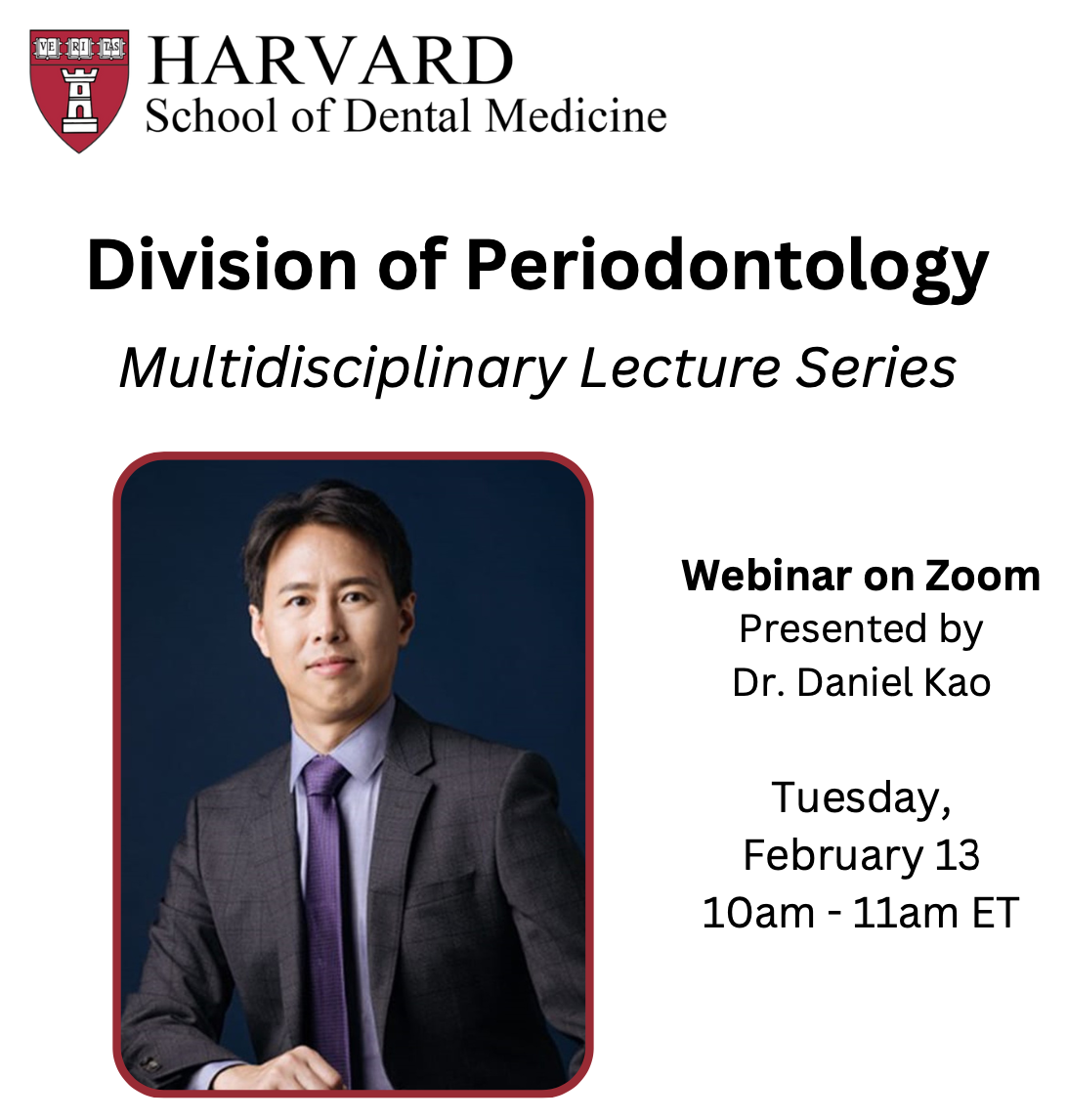Date:
Tuesday, February 13, 2024, 10:00am to 11:00am
Location:
Webinar via Zoom

Speaker: Dr. Daniel Kao
Abstract:
目前植牙是上顎無牙區的治療選擇之一,醫師必須熟悉各種上顎竇提升手術,以便為患者提供最理想的治療方案。
治療的成功,不僅取決於上顎竇提升和植體的骨整合,還取決於植體的位置,這會影響到其功能及美觀。
隨著植牙的廣泛應用,正確評估齒槽脊容積和寬度,也變得很重要。
As treatment options of edentulous maxillary today may include dental implants, the practitioner must familiar with various sinus lift surgical techniques in order to choose an ideal treatment option for the patient. The success of therapy is not only dependent on the success of the sinus elevation and the integration of an implant, but also the position and utilization of the implant(s) both for function, health and aesthetics. With widespread use of dental implants, evaluating alveolar bony ridge volume and dimensions should also incorporate the inter-arch relationship to achieve a successful surgical, restorative and esthetic outcome.
Learning Objectives:
At the conclusion of this course, participants will be able to:
1.The ultimate goal of the Lateral Window and the trans-alveolar approaches is the elevation of the Schneiderian membrane from the underlying sinus wall creating room for the insertion of either bone grafts or the implant(s) or both. Implant(s) can be placed either together with the procedure (simultaneous placement), or during a second appointment after a period of healing (delayed placement).
2.How to handle the complications of Sinus elevation
3.Understand various techniques have been proposed for maxillary sinus elevation, which differ in surgical approach (lateral window approach and internal transalveolar approach), bone graft materials (autografts, allografts, xenografts and bioengineering materials) and advanced technology application (piezosurgery, balloon and controlled hydrostatic concept) for hard tissue (bone) and soft tissue (Schneiderian membrane) management.
